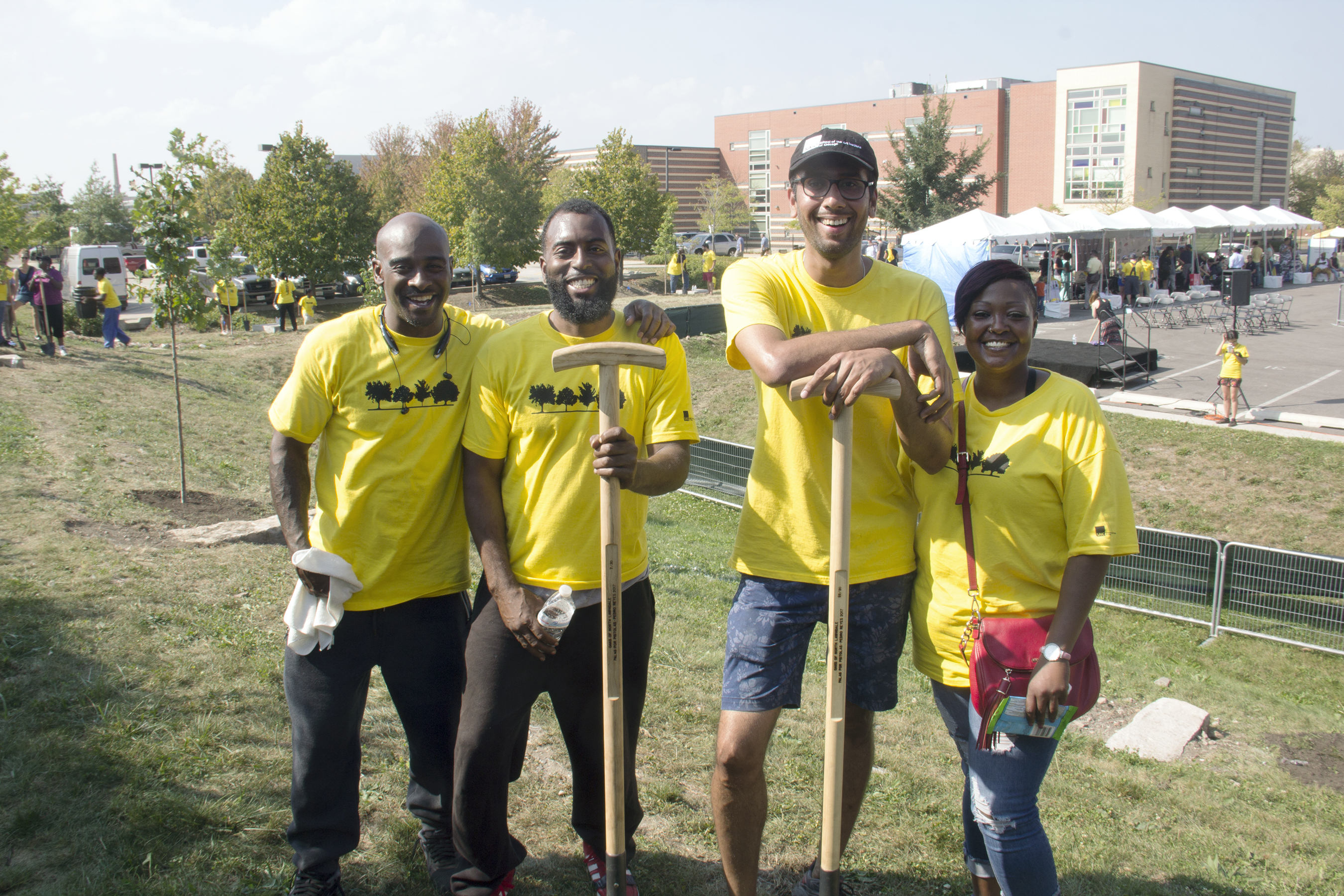The 51st Street Green Line Chicago Transit Authority station is bustling with activity. Every Wednesday, Bronzeville community members come out in droves to visit Boxville Market at Calumet and 51st Avenues to buy vintage clothes, eat locally-made (and often locally-grown) food – tacos, jerk chicken, sweet potato fries-, listen to local DJs, and share space with one another. Across the street from Boxville is a community garden, which provides a sanctuary of green in the area. There’s a mosaic on the wall of an adjacent building which reads “do you want a community center without walls?” The answer, in this community, is a resounding yes.
These community activities take place every week in a neighborhood with approximately 30.7% of its population in poverty. The community also faces significant vacancy rates, economic disinvestment, and gun violence. These statistics have not deterred Urban Juncture, the organization that has helped fund the majority of the projects going on in the area, from furthering its mission. Urban Juncture aims to spur development in the Bronzeville community area through gardens, restaurants, and a business incubator space for community members. The challenge it faces is access to capital to continue pursuing activities like Boxville and the community garden that empower local residents and improve climate and cultural resilience.
In an effort to help combat this challenge near the 51st Street Green Line and 3 other transit stations across the city, CNT and local Chicago community organizations secured funding from Enterprise Community Partners and Elevated Chicago to implement public arts and garden projects near transit through an initiative called Chicago Connections. By engaging community residents in collaborative, place-based thinking around train stations and creating installations involving artists and trusted community organizations, Chicago Connections supports cultural expression and cohesion; addresses environmental and social issues including urban flooding, urban heat island, displacement, and disinvestment; and drives increased ridership and visibility in the CTA itself. CNT will provide technical assistance and education across all sites, aiding project partners in site design and construction as well as the implementation of each stormwater project.
The other CTA station areas involved in Chicago Connections include the Logan Square Blue Line, the Kedzie Homan Blue Line, and the California Pink Line.
At the Logan Square Blue Line, the Latin United Chicago Housing Association (LUCHA) and the Logan Square Neighborhood Association are engaging a local youth council to develop a project that responds to the current patterns of displacement in Logan Square. They are partnering with local artists and businesses to create an outdoor arts and garden space for Latino youth, street vendors, and other community members to convene and celebrate their heritage.
At the Kedzie Homan Blue Line, the School for the Art Institute of Chicago (SAIC) is working with the North Lawndale Community Coordinating Council to reforest the Lawndale neighborhood, an area of the city that was decimated by the emerald ash borer beetle and faces high unemployment rates and gun violence. Starting on September 23rd, SAIC and its partners will plant 7000 trees over the course of several years throughout the community area, creating jobs, mitigating the effects of urban heat island and urban flooding, and providing the community with gathering places. The shovels to plant the trees will be made out of dead ash tree wood and repurposed weapons waste.

Oaks of North Lawndale Volunteers
The California Pink Line project is led by the Open Center for the Arts, a non-profit arts gallery, located in the Marshall Square neighborhood. Open Center is working with Marshall Square muralists and residents to develop a hacienda-style rotating public arts display on one of the main commercial thoroughfares in the community area. The hacienda-style design is a nod to Little Village’s Mexican community, the second largest in the United States after Los Angeles. This project, with its involvement of local artists and schools, will represent the presence and strength of local business and community heritage in the area.
Urban Juncture at the 51st Street Green Line station has developed a mural adjacent to its community garden and rooftop garden boxes for its Boxville shipping container shops. It will also work to rejuvenate its community garden, bringing energy back to its “community center without walls”.
The Chicago Connections initiative is focused on social inclusion and neighborhood-driven visions, with the four sites and partnerships chosen specifically to be a model for cross-cultural collaboration. These efforts aim to see racial equity manifest in community empowerment, quality of life improvements, and improved local-decision making around how land in communities and neighborhoods is used to the interests of those who live there.





 Strengthening Transit Through Community Partnerships
Strengthening Transit Through Community Partnerships